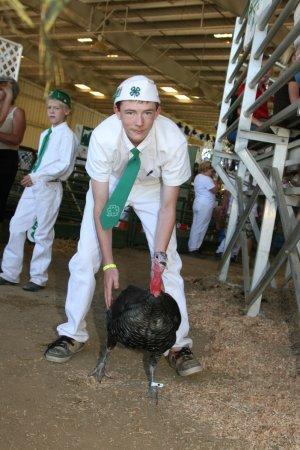LAKE COUNTY – The number of driving-related deaths on the state's highways dropped to the lowest level in California history in 2007, officials reported Thursday.
Also showing a slowdown are the number of local deaths on roadways, according to the California Highway Patrol.
With Labor Day weekend about to begin, officials with the CHP, Caltrans, Office of Traffic Safety, Alcoholic Beverage Control and the Department of Motor Vehicles gathered in the state capital on Thursday to commemorate the “Holiday Death Count” – also known as the Maximum Enforcement Period.
The Holiday Death Count is a grim reminder of the deaths that occur each year on state roadways.
This year, however, the annual observance brings with it a hopeful message – people are dying on California roadways at a lower rate than has ever been previously recorded.
That finding is based on the CHP's Mileage Death Rate, which looks at the number of people killed per 100 million miles driven on state roadways.
For 2007, the Mileage Death Rate was 1.18 deaths per 100 million miles driven, down from 1.27 deaths per 100 million miles driven in 2006, CHP reported.
There were 3,967 people killed in collisions on California roadways in 2007, CHP reported, compared to 4,197 in 2006 and 4,304 in 2005.
In Lake County, CHP reported there were 17 fatalities in 2007, down from 20 in 2006. In 2005, there had been 13 deaths. The county's population was listed at 64,059 as of Jan. 1, a 0.5-percent increase over 2007.
Business, Transportation and Housing Agency Secretary Dale E. Bonner said the numbers were the result of a successful partnership between the state’s traffic safety professionals at all levels of government, the news media and the general public. “It proves we can change behavior for the better if we all work together,” he said.
The Mileage Death Rate for 2007 is about one-tenth of what it was in 1933, when California's population was nearly six million. Figures released in May by California's Department of Finance put the state's population at just over 38 million as of Jan. 1, 2008.
Had the numbers kept pace with the state's population growth, there would be a many as 160 traffic deaths each Labor Day weekend, said CHP Commissioner Joe Farrow.
The three major causes of fatal crashes in California are speeding, not wearing a seat belt and driving under the influence, CHP reported. Those factors have been the focus of aggressive enforcement and education by traffic safety organizations during the past several years.
Office of Traffic Safety Director Christopher J. Murphy said it wasn't a coincidence that the Mileage Death Rate dropped at the same time that the state had a reduction in alcohol-related crashes.
The National Highway Traffic Safety Administration also reported on Thursday that its 2007 Traffic Safety Annual Assessment of Alcohol-Impaired Driving Fatalities showed that 32 states – among them California – had decreases in the number of deaths on roadways attributed to driving under the influence, as compared to 2006.
In the 1940s, the state Legislature gave the CHP a mandate to compile traffic collision data. That became the Holiday Death Count.
As part of the effort to address the alarming numbers of driving-related deaths during holidays, in 1948 the CHP's first commissioner, Clifford Peterson, created the Maximum Enforcement Period to increase safety on the roadways.
Since the count began, the numbers of fatal crashes have shown a general decline, despite the state's large population increase and increasing number of miles driven, CHP reported.
“We believe this is due not only to safety improvements in the vehicles, but also the added public awareness combined with the increased enforcement,” said CHP Deputy Commissioner Skip Carter. “As a result, thousands of lives have been saved over the past 60 years.”
Officials said the area of motorcycle fatalities still has room for “considerable improvement,” as the number of registered riders and crashes have bucked the downward trend and are climbing.
“With more riders on the road, we continue to emphasize safe driving practices for new and veteran motorcycle riders,” stated Department of Motor Vehicles Deputy Director of Licensing Operations, Mimi Khan. “We are reaching out to folks and urging them to take it slow as they learn to ride.”
Likewise, the National Highway Traffic Safety Administration, as part of its Motorcycle Safety Program, reminds motorists to keep watch for motorcycles, which are smaller and can therefore be harder to see.
This weekend, CHP will hold one of its six annual Maximum Enforcement Periods in an effort to keep fatality numbers down.
Beginning at 6 p.m. Friday and lasting through midnight on Monday, up to 80 percent of CHP officers will be on the roads to monitor driving activity and look for speeders, people driving under the influence and those not wearing their seat belts.
Operation CARE (Combined Accident Reduction Effort) also will be in force this weekend, with extra patrols on interstate highways including I-5 and I-80.
CHP reported that it also plans to increase its educational outreach and enforcement efforts to ensure that all motorists safely share the road.
E-mail Elizabeth Larson at This email address is being protected from spambots. You need JavaScript enabled to view it..
{mos_sb_discuss:2}




 How to resolve AdBlock issue?
How to resolve AdBlock issue? 













